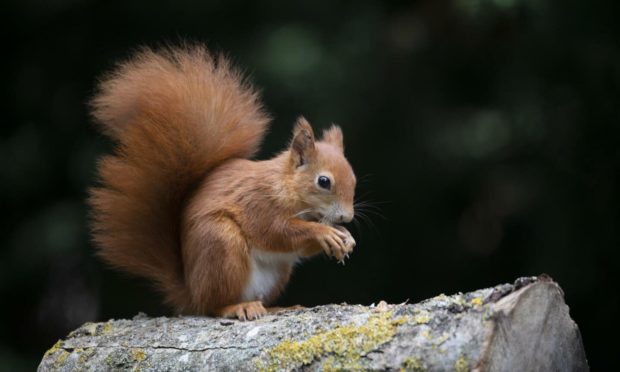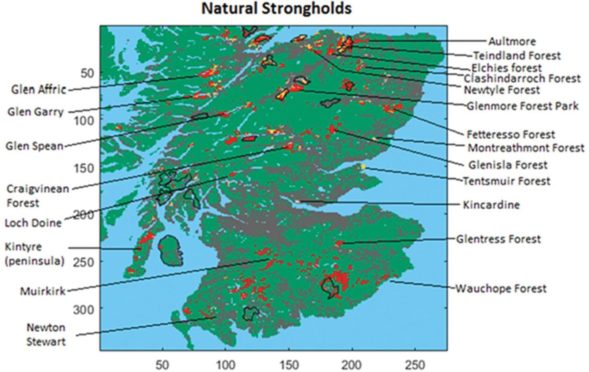Forests across the north and north-east could act as forts to protect red squirrels, even if greys were to run rampant.
Around 80% of the UK’s red squirrel population can be found in Scotland, new research has found. However, the native reds continue to be under threat from their cousins, the invasive grey squirrels.
A variety of conservation measures have been implemented or proposed, from grey squirrel culls to creating managed strongholds.
Earlier this year, Saving Scotland’s Red Squirrels, worried that greys could spread further into the Grampians and Highlands, urged the public to log sightings of both squirrels.
By keeping track of the sightings, the charity could monitor the spread of the greys.
Now a new study from Heriot-Watt University and Forestry and Land Scotland (FLS) revealed that more than 20 forests in Scotland could act as natural strongholds for red squirrels.
Professor Andy White, a mathematical biologist at the university, developed a model to determine whether Scotland’s forests could protect the red squirrels.
He said: “Our model shows that, even in a worst-case scenario, if greys are allowed to run rampant around Scotland, red squirrels will find haven in these natural strongholds.
“This is great news for red squirrels.”
Red squirrels thrive in coniferous forests
Around 10 years ago it was thought that grey squirrels would spread north through Scotland, wiping out the native reds.
However, it has been found that red squirrels thrive in coniferous forests, meanwhile, their grey counterparts do better in broadleaf and mixed forests.
Prof White added: “The current policy is to create 19 managed strongholds for the reds, where broadleaf trees are removed and replanted with conifers that would protect their red populations. However, this would reduce tree species diversity for other species.
“Our model shows that over 20 existing forests in Scotland would act as natural strongholds for the reds. This means we don’t have to remove broadleaf species like oak.
“Natural strongholds could conserve red squirrel populations while simultaneously maintaining forest diversity.”
The team discovered a number of natural strongholds across the north and north-east, including Glen Affric, Glenmore Forest, and Aultmore.
Kenny Kortland, FLS wildlife ecologist said: “This modelling work confirms that forest landscapes managed for timber production create safe havens for viable populations of red squirrels, even if grey squirrel populations were to expand.
“This is great news, as we can all continue to use timber products from Scotland safe in the knowledge that the sector supports one of Scotland’s most popular species.”

